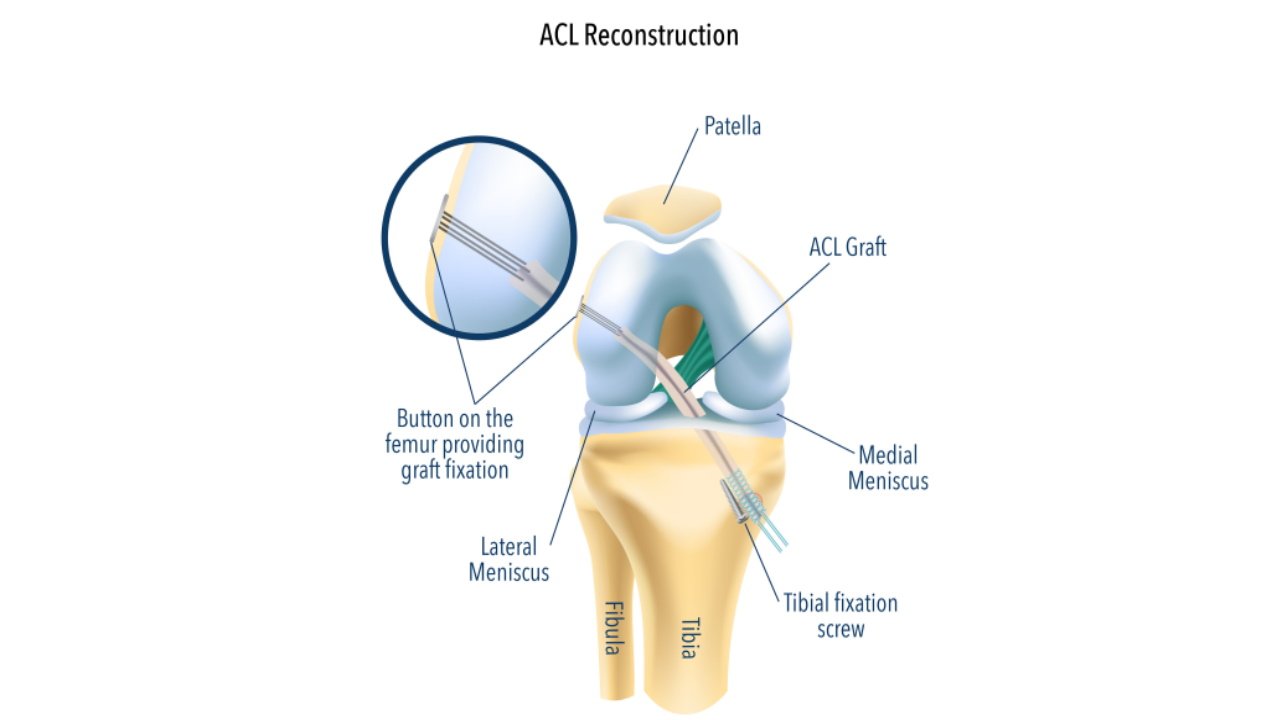ACL Reconstruction

ACL reconstruction is a surgical procedure to replace a torn anterior cruciate ligament (ACL), one of the major ligaments in the knee. The ACL is responsible for stabilizing the knee joint, especially during movements that involve quick direction changes, twisting, or pivoting. ACL tears are common among athletes in sports such as soccer, basketball, skiing, and football.
Causes of ACL Injury
ACL injuries often occur during activities that involve:
- Sudden stops or changes in direction.
- Pivoting on a firmly planted foot.
- Landing awkwardly from a jump.
- Direct collisions that cause the knee to twist unnaturally (e.g., in football or rugby).
Symptoms of ACL Tear
- Sudden pain in the knee following an injury.
- A "popping" sound at the time of injury.
- Swelling of the knee, usually within a few hours.
- Instability or the feeling that the knee might "give way" when trying to walk or bear weight.
- Limited range of motion and difficulty with movement.
Diagnosis
To confirm an ACL tear, a doctor will conduct a physical exam and may order imaging tests such as an MRI or X-ray. The MRI helps to evaluate the extent of the ligament damage, while an X-ray is used to rule out fractures.
ACL Reconstruction Procedure
ACL reconstruction surgery involves replacing the torn ligament with a graft, which acts as a scaffold for a new ligament to grow over time. The graft may be taken from:
- Patellar tendon: From the knee cap.
- Hamstring tendon: From the back of the thigh.
- Quadriceps tendon: From the front of the thigh.
- Allograft: From a donor (cadaver) tendon.
The Surgery
Preparation: ACL reconstruction is performed using arthroscopy, a minimally invasive surgical technique. Small incisions are made in the knee, and a camera (arthroscope) is inserted to guide the surgery.
Graft Harvesting: Depending on the type of graft chosen, the surgeon harvests the graft either from the patient’s body (autograft) or from a donor (allograft).
Torn ACL Removal: The remnants of the torn ACL are removed from the knee.
Graft Placement: Holes are drilled into the thigh bone (femur) and shin bone (tibia) where the ACL used to be. The new graft is threaded through these holes and secured using screws or other fixation devices.
Surgical Closure: The incisions are closed, and the knee is bandaged.
The entire procedure typically takes 1 to 2 hours.
Recovery After ACL Reconstruction
Recovery from ACL reconstruction is a gradual process and can take 6 to 12 months. The recovery plan includes:
- Rest and Protection: You will wear a knee brace and use crutches to keep weight off the knee initially.
- Physical Therapy: Rehabilitation starts shortly after surgery. Early exercises focus on regaining knee motion and reducing swelling, while later stages focus on strengthening muscles and improving balance.
- Return to Activities: It may take up to 6 months or more before you can return to sports or other high-impact activities. Athletes often follow a specific return-to-sport program.
Risks of ACL Reconstruction
As with any surgery, ACL reconstruction carries some risks, including:
- Infection.
- Knee stiffness or loss of range of motion.
- Graft failure, requiring a revision surgery.
- Blood clots in the legs.
- Knee pain at the graft site (if the patellar tendon is used).

